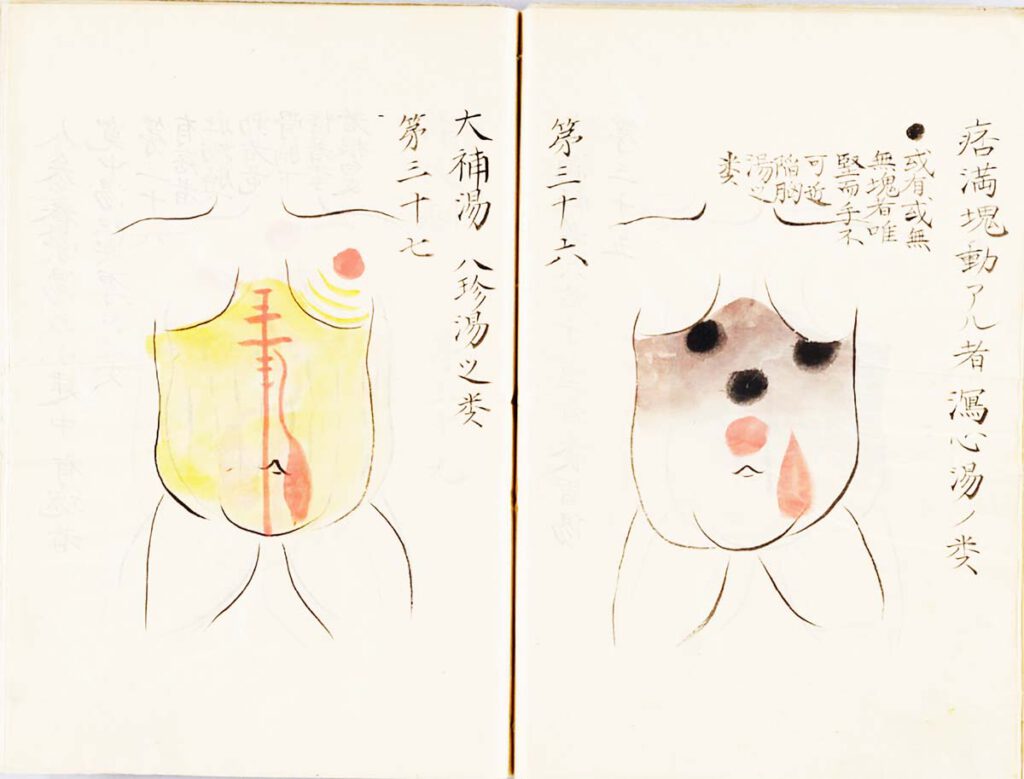Manase Dōsan 曲直瀬道三, Hyakufuku zusetsu

Manase Dōsan 曲直瀬道三, Hyakufuku zusetsu (百腹図説, “Illustrated Explanations of a Hundred Bellies”; n.d.) – Nothing more directly translated the early modern stress on practical, tangible realities than the Japanese innovation known as fukushin 腹診 (abdominal inspection). Whereas Chinese doctors had relied chiefly on feeling the pulse at the wrist to diagnose diseases, Japanese advocates of […]
Sugita Gempaku’s Kaitai shinsho

Sugita Gempaku’s Kaitai shinsho (解体新書, “New Book of Anatomy”; 1774) – Sugita Gempaku undertook his epoch-making translation of a Dutch anatomical manual before he could read Dutch. This point is key: What persuaded him of the manual’s truth was not its text, which he initially couldn’t comprehend, but rather, its images, and more specifically their […]
